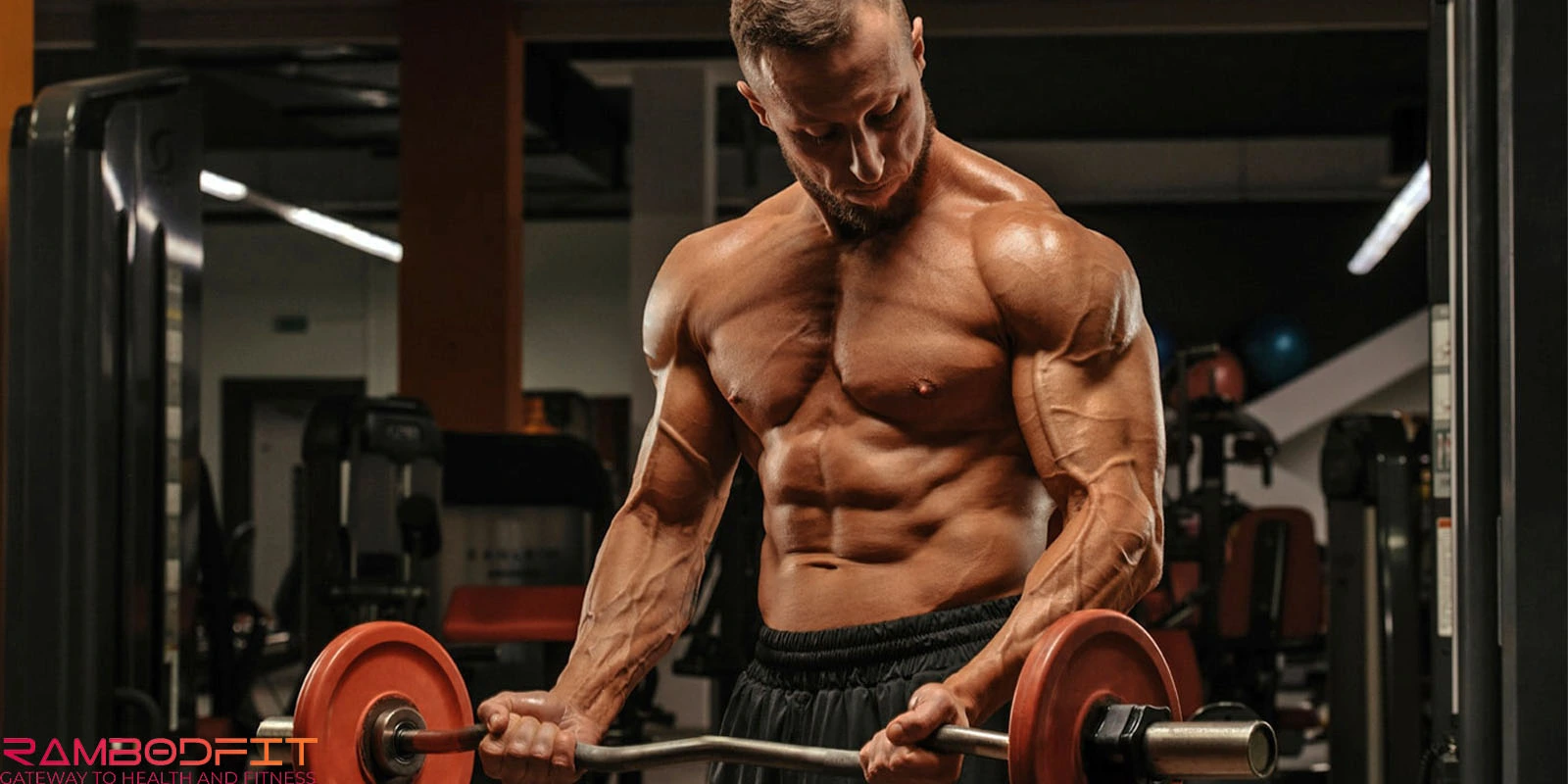


Alright, let’s get real for a second—if you’ve spent any time around dumbbells or grunting gym bros, you’ve definitely heard about the “mind-muscle connection.” It’s like this half-mystical, half-broscience thing people swear by: “Bro, if you FEEL the muscle, you double the gains.” Yeah, okay. But when you start looking at the mind-muscle connection for athletes, it’s not just gym chatter—it’s a legit performance tool.
Honestly, when I first hit the iron, I thought all that talk was just gym myth. My motto? Stack more plates, get more swole. Simple as that. Then one day, during a chest workout, my buddy looks at me dead serious and says, “Quit pushing the bar, man. Squeeze your chest.” I’m thinking, “Sure, whatever,” but gave it a shot—and damn, I felt this new kind of burn. Like, next-level stuff. That single rep flipped a switch in my brain.
So what’s the deal? Is this “mind-muscle connection” legit? Can just thinking about your pecs actually make ’em pop? Or is it just another thing fitness influencers hype for clicks?
Here’s what I’m diving into for RambodFit:
Stick with me and, by the end, you’ll know if this mind-muscle stuff deserves a spot in your training—or if it’s just another gym myth to laugh about while you’re curling. Especially when it comes to maximizing the mind-muscle connection for athletes, knowing how and when to activate it could be the edge you’ve been missing.
Table of Contents

Alright, so here’s the deal: the mind-muscle connection isn’t just some gym bro buzzword. It’s basically you telling your body, “Hey, biceps, time to wake up!” and actually getting them to listen. Imagine your brain as the boss, barking orders down the chain—your nerves are the middle managers, passing along the memo, and your muscles are the workers who, if they get the message loud and clear, will actually put in some real effort.
This is especially true when we’re talking about the mind-muscle connection for athletes, where every rep and cue matters for performance and precision.
The better you are at focusing on the muscle you’re trying to work—like really zoning in and feeling it contract—the more muscle fibers jump in to help. More fibers working = better gains. Simple math, right? So, yeah, the connection’s a big deal if you’re chasing those sweet, sweet muscle pumps—or looking to maximize the mind-muscle connection for athletes who want both strength and control dialed in.
Ever notice how, when you start banging away at a keyboard, you’re all thumbs? Every finger press feels awkward, like you’re defusing a bomb or something. Fast forward a bit—suddenly your fingers just know where to go. Muscle memory kicks in, and you’re basically a typing ninja. That’s the same kind of brain-body sync we’re aiming for with the mind-muscle connection for athletes—it’s not just about movement, it’s about precision and control.
Lifting weights is kinda the same deal. At first, you’re all over the place—awkward, unsure, maybe even making weird faces. But give it time. Once your brain and body start vibing, you’re nailing those reps and actually hitting the right muscles like a pro. That’s the mind-muscle connection for athletes in action: turning chaos into clean, focused movement that drives real results.
Building muscle? It’s all about cranking up the tension—basically, making your muscles work their butts off. And, yeah, it actually matters where you feel that stress. Like, if you’re doing pull-downs and only your biceps are screaming, congrats, you just missed the point. You want your lats to take the hit. Nail that mind-muscle connection for athletes, and boom, now you’re actually giving your muscles a real reason to grow.
Research strongly suggests that internal focus—thinking about the muscle—enhances muscle activation.
Honestly, MMC doesn’t work the same magic for every goal.
• Hypertrophy (size): If you’re chasing muscle gains, dialing in that mind-muscle connection can fire up more muscle fibers, which could mean bigger muscles over time. This is where the mind-muscle connection for athletes really shines, helping you isolate and activate target muscles for maximum growth.
• Strength (power): But if you’re trying to move some serious weight—think heavy squats or deadlifts—getting laser-focused on just one muscle might actually mess with your overall power. In these cases, it’s more about nailing your technique and making your whole body work together, rather than obsessing over one muscle doing all the heavy lifting.
Isolation Movements
You really feel that mind-muscle connection kick in when you’re doing stuff like bicep curls, cable flyes, lateral raises, or leg extensions. Seriously, these are the moves where you can just chill out, drop the ego weights, and zone in on that one muscle. For real mind-muscle connection for athletes, isolation exercises like these are gold—no need to stress about balancing or keeping a bunch of joints in check. It’s just you and the muscle, no distractions. Kind of satisfying, honestly.
Compounds for Hypertrophy (Not Max Strength)
If you’re chasing muscle growth, yeah, bring that mind-muscle connection into your big lifts. Like, don’t just shove the bar on bench press—actually try to crush your pecs together, feel ‘em working, not just flinging your elbows straight. Same deal with rows: pull with your lats, not just yanking with your arms like you’re starting a lawnmower.
For a serious mind-muscle connection for athletes, this focus can take your muscle activation to the next level. But if you’re going for a max, don’t overthink it. All that focus might just mess up your form and cost you the lift. Sometimes you gotta just grip it and rip it, you know?
Lagging Muscle Groups
Got a muscle that just won’t cooperate—like those rear delts, lower lats, or glutes that ghost you in the mirror? Mind-muscle connection (MMC) might be the secret sauce you’re missing. When you really zero in on the muscle you’re supposed to be working, you actually wake it up and stop those sneaky muscles (looking at you, front delts) from hijacking the whole workout.
For anyone serious about gains, mastering the mind-muscle connection for athletes can make all the difference. No more letting your pecs get mugged by your shoulders.
Developing MMC is a skill—it won’t happen overnight. Here’s a step-by-step approach:
1. Slow Down Reps
Control every phase:
This lets you feel every fiber working and prevents momentum from stealing tension.
2. Pre-Pump Techniques
Do a light isolation set to prime the muscle before heavy compounds. Example:
This “wakes up” the target muscle for better recruitment later.
3. Visualization
Shut your eyes when you’re grinding out those reps. Picture your muscles swelling up, blood just flooding in, skin going tight like you’re about to Hulk out. Honestly, this isn’t just some woo-woo trick—visualization fires up your brain like crazy. Olympic lifters, sprinters, even that jacked dude at your gym? They’re all in on it. Give it a shot; your muscles might actually listen.
4. High-Rep Warm-Ups
Cranking out a bunch of reps—like, 15 or 20—with lighter weights? Yeah, you’ll get that crazy pump, plus it kinda wakes up your muscles so you can actually feel what the hell you’re doing. Makes that whole mind-muscle connection thing way easier when you start tossing around the heavier stuff later.
5. Palpation (Touch)
Honestly, just poking or tapping a muscle wakes it up—gets your brain to actually notice it. Coaches love doing this, right? You’ll see them tapping someone’s lats during a pull-down, basically telling those muscles, “Hey, time to join the party.” It’s like a little nudge to get them firing—a simple but effective trick to boost the mind-muscle connection for athletes.
6. Isometric Holds
Hold it right at the top for a couple of seconds—like 2 or 3—not forever, just enough to really fire up that mind-muscle connection. Yeah, it’s kinda awkward, but trust me, your muscles and your brain will start chatting way better if you do this. You’ll totally feel that burn where you’re supposed to.
7. Reduce Ego Lifting
Lighten up. When your form goes out the window, you’re just flailing around—your target muscle’s basically clocked out. Stick with weights you can actually handle, like 60 to 75% of your max. That’s the sweet spot for keeping your mind and muscles on the same page.
8. Practice Often
Honestly, Mind-Muscle Connection For Athletes is one of those things that just clicks the more you do it. Repetition is the name of the game. Set aside a chunk of every workout to dial it back, slow it down, and really zero in on the muscles that just… refuse to get with the program. Trust me, those stubborn bits need the extra TLC to master the mind-muscle connection for athletes.

MMC gives your workout a boost, sure, but don’t kid yourself—it’s not some magic shortcut. You still gotta grind with progressive overload, solid volume, and, yeah, actually rest sometimes. Think of MMC as a sidekick, not the main hero
If you’re slinging heavy weights or busting out some athletic stuff, honestly, it’s way better to think about stuff like where the bar’s going or how fast you’re moving, not just, “Am I squeezing my biceps hard enough?” Seriously, obsessing over one muscle can totally wreck your form. Don’t get tunnel vision.
Honestly, if you’re just tossing around heavy weights and can’t even feel the muscle you’re supposed to be working—yeah, you’re probably just letting your other muscles pick up the slack. Drop the macho act, lower the weight, and actually focus on squeezing the right muscle. Control beats ego-lifting every single time
Alright, look—if you’re just starting out, don’t even think about fancy stuff yet. Nail the basics first. Seriously, get those mechanics into your muscle memory till you don’t even have to think about ‘em. Once you’ve got that down, then, yeah, the mind-muscle connection for athletes suddenly makes a whole lot more sense. Otherwise, you’re just making life harder for yourself
Alright, so your chest’s slacking off and you wanna shock it into finally growing? Try this on for size:
If your chest isn’t screaming by the end, you probably need to double-check you’re not just working your shoulders and triceps. Or maybe you’re secretly a T-Rex, who knows?
Why do people mess up their lifts? Oh man, happens all the time. Here’s the usual suspects:
• Trying to be a hero with the weight. Drop it down, ego-lifter. Form comes first—otherwise, you’re just grinding your joints into dust.
• Lousy setup. Maybe your grip’s all wrong, or you’re standing like a baby giraffe. Tweak your grip, mess with your stance, change the angle—like, on rows, take that grip out wider if you wanna torch your lats.
• Cheating with momentum. You’re not in a rock band—quit swinging. Slow it down, actually feel the muscle doing the work, not just your whole body flailing around.
• Mind-muscle connection is MIA. If you can’t feel the muscle, you probably aren’t working it right. Do a few sets with baby weights or just your bodyweight, every damn day, until your brain and muscles are on speaking terms. This is basic mind-muscle connection for athletes training—no shortcuts here.
There you go. No more excuses.
Yeah, the mind-muscle connection thing? Totally legit—but don’t go thinking it’s some mystical superpower. It’s more like a trick you pick up that makes your gains hit harder, but only if you’re also, you know, actually pushing yourself, following a half-decent plan, and not skipping out on sleep.
If you’re just starting out, seriously, nail the basics first. Don’t even sweat the fancy stuff until your form’s dialed in. Once you’ve got that down and you’re not a total noob anymore, then yeah, start zoning in on that muscle squeeze. Perfect for dragging those stubborn body parts out of hiding and getting a little extra bang out of every rep. That’s the magic of the mind-muscle connection for athletes.

Look, the whole “mind-muscle connection” thing? It’s not just some bro-science buzzword. When you really dial in and pay attention to every rep, suddenly you’re not just flinging weights around—you’re actually telling your muscles, “Hey, wake up, you’re working now!” It’s wild how much of a difference that makes.
If you’ve been grinding away and feel like your gains are stuck in neutral, maybe try chilling out on the speed reps and actually feel what you’re doing. Slow it down, squeeze, focus. That’s the power of the mind-muscle connection for athletes—unlocking progress you didn’t even know you were missing.
Give it a shot—your future self might just thank you (and your arms might actually look bigger in that selfie, too).
Reference and Further Studies
PubMed: Increased Muscle Activation with Internal Focus
Totally, but let’s be real—if you’re brand new, you gotta nail the basics first. Get that form down so you’re not flailing around. Once moving feels natural (like, you don’t have to think about every little thing), that’s when MMC actually starts to click. Building a solid foundation is key to mastering the mind-muscle connection for athletes later on.
Yeah, technically it can. Still, some muscles—think lats or glutes—are annoyingly shy. You might struggle to “feel” them working at first. Try slowing things down, really focusing, maybe even tossing in some pump-up sets before your main work.
It’s a hypertrophy thing, hands down. If you’re chasing pure strength, you need your whole body firing together, heavy weights, the works—not zoning in on a single muscle. Mind-Muscle Connection For Athletes is all about that muscle burn and growth, not powerlifting records.